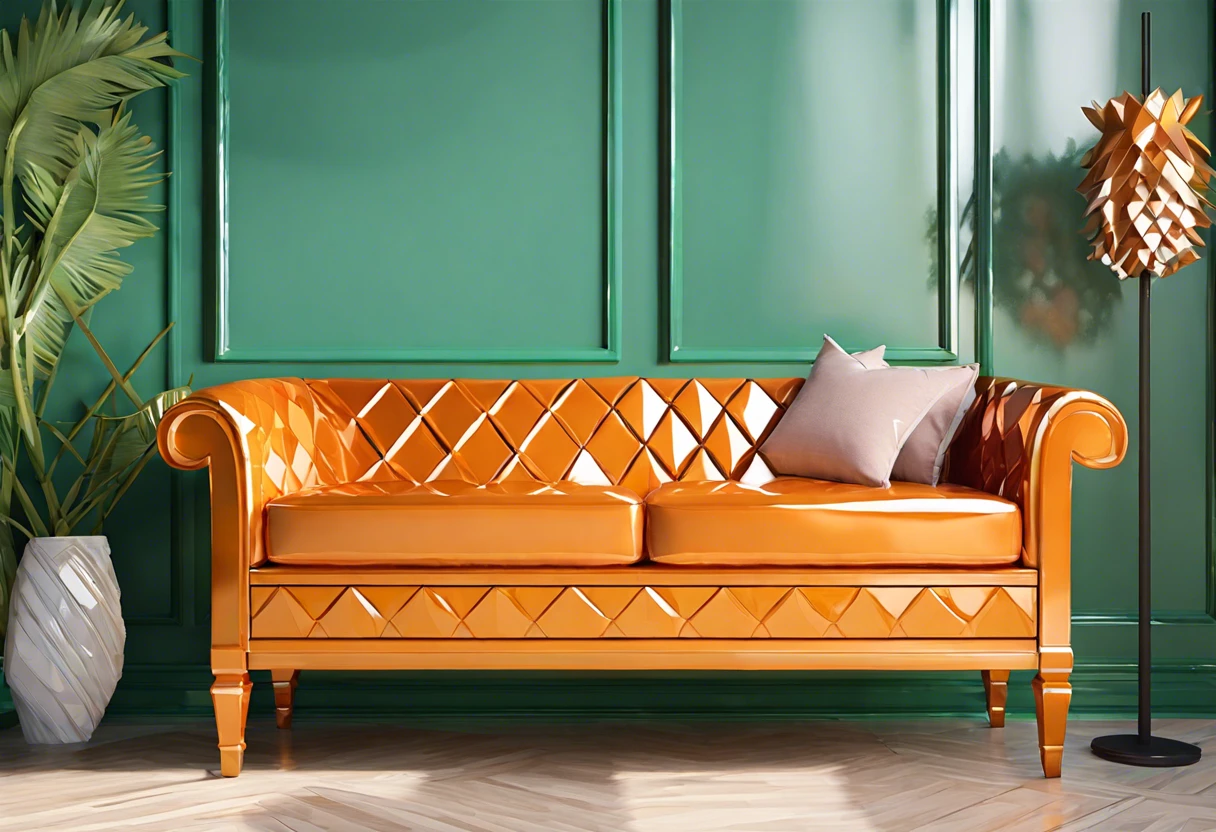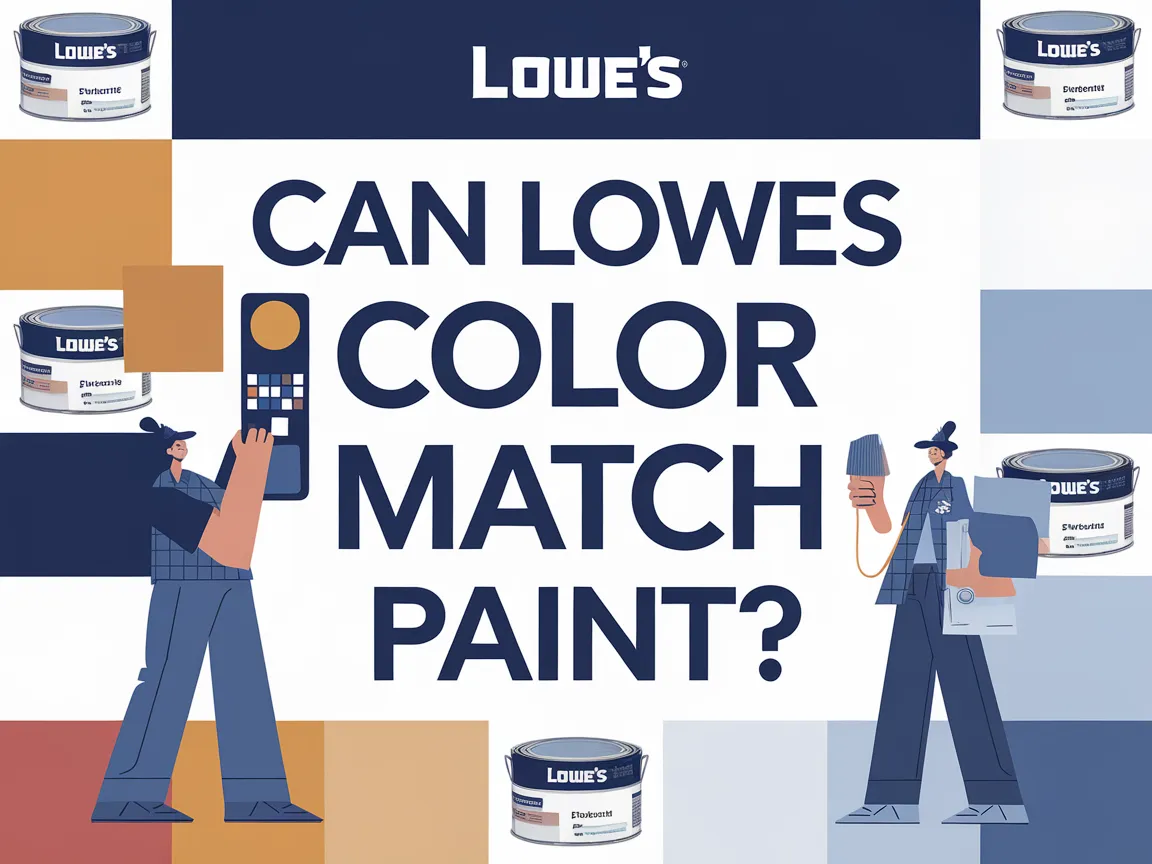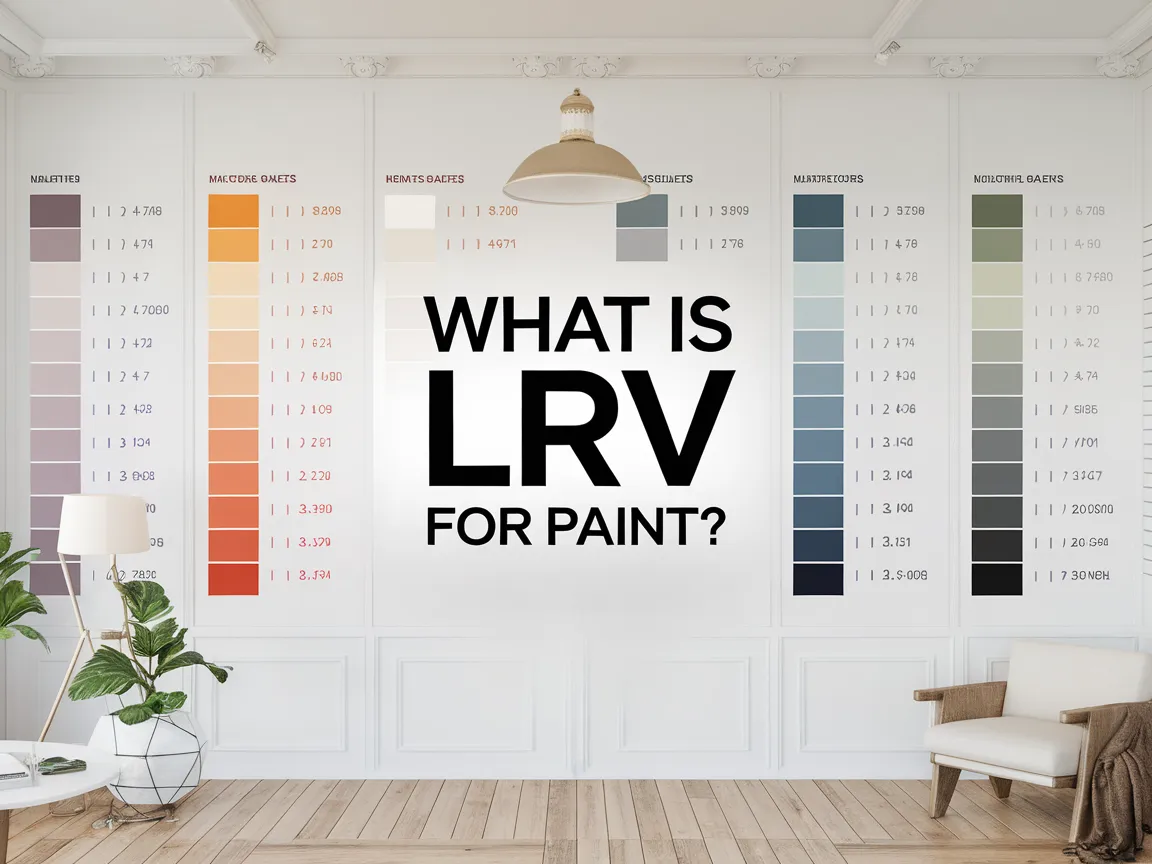Can You Lacquer Over Paint?
Published on: June 10, 2025 | Last Updated: January 7, 2025
Written By: Isabella Cruz
Lacquer is a shiny liquid that makes things look pretty when it dries. It’s like a magic potion that turns dull surfaces into beautiful, smooth treasures.
So, can you lacquer over paint? It’s super important to know because if you don’t, your masterpiece might not shine like you want it to. I learned this the hard way when I lacquered without checking first, and it bubbled up like a soda!
In this guide, you’ll learn about what lacquer is, what to think about before you start, step-by-step instructions, suitable lacquer types, issues you might face, and some creative DIY ideas. Plus, I’ll sprinkle in facts like can you paint in the winter, and what is glaze paint, to keep it interesting.
Contents
- 1 Can You Lacquer Over Paint?
- 2 What is Lacquer?
- 3 What to Consider Before You Start Lacquering Over Paint
- 4 Understanding the Differences Between Lacquer and Polyurethane
- 5 Compatibility Checks: Paint and Lacquer
- 6 Lacquer Application Techniques to Enhance Your Finish
- 7 Step-by-step Guide to Lacquering Over Paint
- 8 Types Of Lacquer Suitable for Use Over Painted Surfaces
- 9 Factors Affecting the Success Of Lacquering Over Paint
- 10 Common Issues Encountered When Lacquering Over Paint
- 11 Finishing Touches to Consider After Lacquering
- 12 Expert Tips for Achieving a Flawless Lacquer Finish
- 13 Lacquer Drying Times: What You Need to Know
- 14 Common Lacquer Application Mistakes to Avoid
- 15 Frequently Asked Questions About Lacquering Over Paint
- 16 Conclusion
- 17 Useful Resources
Can You Lacquer Over Paint?
Yes, you can lacquer over paint. Just make sure the paint’s fully dry and cured first—this usually takes about 24 hours. Choose a compatible lacquer for the best results. Lightly sand the paint for better adhesion. If you’re working with specific surfaces like painting clay pots with lacquer, additional preparation steps might be necessary.
What is Lacquer?
Lacquer is a fast-drying, solvent-based finish used in woodworking and art. It creates a hard, durable coating, typically 3 to 5 micrometers (Μm) thick per layer, making it ideal for protecting surfaces.
You might wonder if you can lacquer over paint. I’ve tried this myself—I painted a wooden stool and then added a lacquer coat. The finish really changed the entire look!
A friend of mine used lacquer for her cabinets, and the results were stunning. She also debated whether she could lacquer over the initial paint job. It’s essential to understand compatibility, as some modern paints may not bond well. Preparation is key to ensuring the surface is ready for a solid finish. When working with exterior surfaces, temperature plays a crucial role in paint application, so knowing the right painting techniques can help you achieve optimal painting results.
What to Consider Before You Start Lacquering Over Paint
What do you need to prepare?
- High-Quality Lacquer: Choose a lacquer like Zinsser Bulls Eye 1-2-3 or Minwax Polyurethane. It’s essential for a durable, smooth finish.
- Paint Stripper: You might need a product like Citristrip or Klean-Strip. It removes unwanted paint layers for better adhesion.
- Sandpaper: Get medium to fine grit, such as 120 and 220 grit. Sanding smooths the surface, helping the lacquer bond properly.
- Protective Gear: Use gloves and a mask. Products like 3M masks protect you from fumes and dust during application.
- Proper Workspace: Set up in a well-ventilated area, either indoors or outdoors. This prevents dust and aids in achieving a smoother finish.
We’ve wrapped up key considerations for lacquering over paint. Let us turn our attention to the distinctions between lacquer and polyurethane.
Also See: How Much Do Bob Ross Paintings Cost? Find Out Now!

Understanding the Differences Between Lacquer and Polyurethane
Before you dive into lacquer over paint, it’s crucial to understand how it compares to polyurethane. Each has unique properties that affect your final finish.
| Property | Lacquer | Polyurethane |
|---|---|---|
| Drying Time | 30 minutes – 1 hour | 2 – 8 hours |
| Finish | Glossy | Satin to Glossy |
| Durability | Less durable | Highly durable |
| Application | Spray or brush | Brush or roller |
| Usage | Best for interior projects | Suitable for all areas, including outdoors |
We’ve wrapped up the differences between lacquer and polyurethane here. Let us turn our attention to compatibility checks for paint and lacquer.
Compatibility Checks: Paint and Lacquer
A successful lacquer finish relies on the right combination of paint and lacquer. Let’s break down what you need to know.
-
Oil-Based Paint
Lacquer can work over oil-based paint, but always test first. Make sure the paint’s fully cured for at least 72 hours.
-
Water-Based Paint
Water-based paints are more compatible with water-based lacquers. Ensure both are compatible; otherwise, you might notice bubbling.
-
Gloss Paint
Glossy surfaces may require sanding for better adhesion. A rougher surface helps lacquer stick well.
You should now have a good understanding of compatibility checks for paint and lacquer. In the next part, we’ll discuss techniques for applying lacquer.
Lacquer Application Techniques to Enhance Your Finish
To ensure the best result when lacquering over paint, consider these application techniques.
-
Spraying Method
Using a spray gun allows for even distribution. Keep a distance of 6-12 inches (15-30 cm) from the surface while spraying.
-
Brushing Technique
If you’re brushing, use a high-quality brush to prevent streaks. Apply thin, even layers to avoid runs.
-
Buffering for Shine
After initial curing, lightly buff the surface with fine sandpaper (around 400 grit) to enhance shine.
You should now have a good understanding of lacquer application methods to improve your finish. In the next part, we’ll discuss the detailed process of lacquering over paint.

Step-by-step Guide to Lacquering Over Paint
Here are the steps to successfully lacquer over paint. Follow them for great results!
-
Prepare the Surface for Lacquering
Clean the painted surface with mild detergent and water to remove grease and dirt. After drying, use fine-grit sandpaper (About 220 Grit) to lightly scuff the paint—this helps the lacquer grip. If you’re curious about professional painting techniques and original artwork preservation, you might want to explore how artists like Bob Ross approach painting.
Don’t sand too aggressively; avoid damaging the paint underneath. A well-prepped surface promotes adhesion, reducing the chances of peeling later.
-
Select the Right Lacquer
Choose a lacquer that fits your project needs. Nitrocellulose lacquer dries quickly and offers a glossy finish, while polyurethane lacquer provides durability.
Pick the right type for your paint, especially if it’s water-based or oil-based. I once mixed paints with incompatible lacquers, creating a mess!
-
Apply a Test Area
Before starting the full project, always apply the lacquer to a small, hidden test spot. This ensures compatibility with your painted surface and shows how the final look will appear.
I’ve been down this road before; trust me, testing saves a lot of hassle later. Wait for it to dry and check for any reactions or peeling.
-
Apply Layered Coats Of Lacquer
Apply lacquer in thin, even coats. Hold the spray can or brush 6 to 12 inches (15 to 30 Cm) away from the surface for best results.
Apply 2-3 separate coats, allowing each coat to dry completely (About 30 Minutes) between applications. Thin layers prevent unsightly runs or sags from thick applications.
-
Finish With Final Touches
After the final coat of lacquer has dried, inspect the surface for imperfections. If needed, use fine-grit sandpaper to smooth any rough patches before applying a final, very light coat.
Once everything’s smooth and shiny, allow the lacquer to cure completely for at least 48 hours in good air circulation. This will ensure your finish is durable and ready for use!
Types Of Lacquer Suitable for Use Over Painted Surfaces
Let’s explore various types of lacquer: Nitrocellulose, Acrylic, Water-Based, and Clear Lacquer.
-
Nitrocellulose Lacquer
Nitrocellulose lacquer is a fast-drying finish. It dries in about 30 minutes to 1 hour and adheres well to painted surfaces.
-
Acrylic Lacquer
This type provides a durable and glossy finish. It’s UV-resistant and dries in 15 to 30 minutes, making it ideal for indoor projects.
-
Water-based Lacquer
Water-based lacquer has low volatile organic compounds (Vocs) and is environmentally friendly. It’s an excellent choice for painted surfaces since it dries clear and quickly.
-
Clear Lacquer
Clear lacquer offers a protective layer over paint and can enhance colors. It typically takes about 1 to 2 hours to dry.
From my experience, acrylic lacquer works best on painted surfaces. It’s easy to apply and leaves a smooth, glossy finish that lasts.
Factors Affecting the Success Of Lacquering Over Paint
What factors impact whether lacquer works over your existing paint?
-
Type of Paint: Different paints, like latex or oil-based, react unpredictably with lacquer.
-
Paint Curing Time: If the paint isn’t fully dry, lacquer can lift or bubble.
-
Surface Preparation: A clean, smooth surface helps lacquer adhere better.
-
Environmental Conditions: High humidity or cold weather can negatively affect drying times.
Common Issues Encountered When Lacquering Over Paint
When my friend tried lacquering over paint, he found uneven leveling, which created streaks and blotches. He used a low-quality lacquer that couldn’t adhere properly.
To fix this, he lightly sanded the surface. Then, he applied a high-quality lacquer, ensuring even coats were spaced at least 30 minutes apart. It made all the difference!
Finishing Touches to Consider After Lacquering
After you’ve applied lacquer, let it cure for at least 48 hours at room temperature (20°C or 68°F) before handling. Use a temperature and humidity monitor to maintain ideal conditions, aiming for 50%-70% humidity.
Inspect your finished piece carefully. Check for imperfections like bubbles or runs in auto lacquer brands such as Dupli-Color or Rust-Oleum. These may require wet-sanding with 2000 grit (0.08 Mm) paper. When working with automotive paints, temperature can significantly impact your finish, so it’s crucial to know how cold affects paint performance.
If you have a few years of experience, consider spraying multiple thin layers. Aim for 2-3 coats, allowing 10-15 minutes of drying time between each. This technique improves your finish quality. When painting boats, you’ll want to explore specific painting layering techniques.
Expert Tips for Achieving a Flawless Lacquer Finish
Want to elevate your lacquer game? Here are some expert tips to ensure a stellar finish.
-
Choose the Right Environment
Avoid hot or humid days. The ideal temperature is between 50°F and 90°F (10°C – 32°C) with humidity around 50% for the best adhesion and drying.
-
Layering for Depth
Using multiple thin layers achieves depth and shine. Aim for 4-5 coats, allowing each layer to dry for about 30 minutes before the next.
-
Sanding Between Coats
For a perfect finish, lightly sand between coats using 400 grit (0.4 mm) sandpaper. This helps to smooth the surface and allows better adhesion of subsequent layers.
Lacquer Drying Times: What You Need to Know
Drying time plays a huge role in your results. Here’s a quick breakdown.
| Type of Lacquer | Touch Dry | Recoat Time | Full Cure |
|---|---|---|---|
| Nitrocellulose Lacquer | 30-60 minutes | 1-2 hours | 24 hours |
| Acrylic Lacquer | 15-30 minutes | 30-60 minutes | 48 hours |
| Water-based Lacquer | 30-45 minutes | 1-2 hours | 72 hours |
Common Lacquer Application Mistakes to Avoid
Let’s look at common pitfalls and how to avoid them to perfect your lacquer game.
- Skipping Surface Prep: Always prepare your surface! A clean, sanded area promotes adhesion.
- Applying Too Thick: Don’t rush it! Thick coats lead to runs. Better to go thin and build up layers.
- Using Poor Quality Products: Invest in high-quality paints and lacquers for a professional finish.
Also See: How Do You Remove Super Glue From Car Paint? Tips Inside
Frequently Asked Questions About Lacquering Over Paint
Can I Use Any Type Of Lacquer Over Any Paint?
Yes, you can’t use any type of lacquer over any paint. Different types of lacquer interact differently with various paint compositions. For example, nitrocellulose lacquer and polyurethane paint might not mix well, causing bubbling or peeling.
How Long Should I Wait Before Applying Lacquer Over Paint?
You should wait at least 24 hours before applying lacquer over paint. This allows the paint to cure properly, preventing issues like lifting or bubbling. Some paints might even require up to 72 hours for full curing. If you’re unsure about surface preparation techniques, repairing paint surfaces effectively can help ensure a smooth finish.
Will Lacquer Change the Color Of the Paint Underneath?
Yes, lacquer can change the color of the paint underneath. Lacquer may add a glossy sheen, making colors appear different, or even duller depending on the formulation. Test on a small area first to be sure. If you’re curious about color transformations in painting, you might find it interesting how traditional practices like farmers chose barn paint colors.
What Are the Best Practices for Applying Lacquer?
The best practices for applying lacquer include using a well-ventilated area, applying thin layers, and allowing adequate drying time. This method helps to avoid drips and ensure an even finish that enhances durability. Aim for 2-3 light coats.
Is It Necessary to Sand the Surface Before Lacquering?
Yes, it is necessary to sand the surface before lacquering to ensure better adhesion. Sanding creates a texture for the lacquer to grip onto, while finer grits like 220-grit (0.23 Mm) help smooth for an even finish.
Can Lacquer Be Used on Surfaces That Are Exposed to Moisture?
No, you shouldn’t use lacquer on surfaces exposed to moisture. Lacquer tends to break down when in contact with water long-term, leading to deterioration. For high-moisture areas, consider a polyurethane finish instead.
What Type Of Applicator is Best for Lacquer?
A spray gun is often the best applicator for lacquer. It provides a smooth, even coat and minimizes brush marks. Conventional spray guns or HVLP systems work well for this purpose, producing outstanding results in less time. When precision matters, I recommend exploring different chip paint brush techniques for complementary application methods.
Conclusion
We’ve reached the end, and I appreciate you sticking around. We covered what lacquer is, considerations before lacquering, a step-by-step guide, a recommended color palette, types of suitable lacquer, factors affecting success, common issues, finishing touches, and creative DIY project ideas.
To answer your question, can you lacquer over paint: Yes, you can, but certain conditions matter. I trust these insights have been helpful, whether understanding the types of lacquer (Like Water-based or Solvent-based) or learning to avoid cracking paint. Just remember, proper preparation ensures a smoother finish.
For more in-depth information and resources, please visit our homepage: Paint Answers.
Useful Resources
- Smith, R. (2003). The Artist’s Handbook of Materials and Techniques (5th ed.). New York, NY: Knopf.
- Lacquer over a Painted Finish…. | LumberJocks Woodworking Forum
- Lacquer over latex | Professional Painting Contractors Forum
- How to Spray Lacquer over Paint – Techniques | Annie Sloan
Isabella is a Filipino-American art writer and critic specializing in contemporary painting, blending her Filipino heritage with global art trends. She holds a BFA from California State University, Long Beach, and a Minor in Art History from the University of the Philippines. Isa has experience as a Gallery Assistant, Art Appraisal Specialist, and Social Media Creative for Art & Design.
Layering, Topics




